3. "The Road to the Child"
Methods of Examination
"And then one should search... for connections, conditions and situations that have acted at once or slowly, and with which perhaps the origin of the abnormal deviation may be justifiably linked... Moreover, it is necessary to understand why these conditions and situations have brought about such results in the patient, when in another person they would occur without the slighest effect; and furthermore, why they all lead in the case of one person to just such an abnormal complex, while in another to a totally different one."
- Pavlov
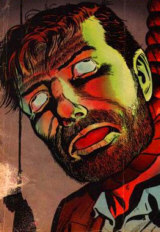 The problem of what comic books do to children, or rather what they have already done to a whole generation, is three-fold. Its solution requires a knowledge of comic books, of the minds of children, and of the processes, the mechanisms, by which comic-book reading influences children.
The problem of what comic books do to children, or rather what they have already done to a whole generation, is three-fold. Its solution requires a knowledge of comic books, of the minds of children, and of the processes, the mechanisms, by which comic-book reading influences children.
When, for example, a young child hangs himself and beneath the dead child is found an open comic book luridly describing and depicting a hanging (as has happened in a number of cases), the mechanics of the relationship between the two have to be investigated, e.g. the processes of imitation and experimentation in childhood.
To study the psychological effects of comics on children one must first have more than a superficial and scanty knowledge of what is in them. For if in children's nightmares or in their play or in their productions in psychological tests, any association or reference occurs to the "Venusians" or "Voltamen," to a "syntho-shade" or to the precise instructions on how to case wealthy homes" for burglaries, you will not understand the response if you do not know the stimulus.
Several times when some of the earlier results of our research were presented, somebody from the field of child care would get up to state that he had never seen a child who was influenced by comic books. This statement in itself is preposterous of course. For nothing that occupies a child for several hours a day over a long period can be entirely without influence on him. The trouble with these arguments was that these people had not studied the contents of comic books, had failed for years to take notice of their very existence as a potentially harmful factor, and had never examined children for their influence. Or the proud protagonists of negative results had - without realizing the implications - even encouraged children to read crime comic books as recreation and proper mental nourishment!
The same is true for superintendents of institutions for delinquents who have stated their opinion that there is no connection between the behavior of juveniles and crime comic book reading. How would they have found out, sitting at their desks far removed both physically and psychologically from the lives of the inmates, to whom for years in these institutions crime comic books have been fed as a steady diet? One Lafargue psychiatrist who worked for a time in a big state reformatory for boys has vividly described how many hours these confined children spend on crime comic books (with which the reformatory is filled to the brim) and his dismay at seeing how children who had got into trouble while reading many crime comics were sentenced to years of incarceration to read even more of them. That is one of the paradoxes of the social problem of crime comic books: that those with authority over children have for years neglected to pay any attention to this literature, which for many children is practically their only reading, have prescribed it for children in their charge as remedy and recreation, have paid no attention to the consequences, and now state as their professional opinion that comic books do not do any harm. Those are not the ways of science.
Such opinions show that these reformatory officials not only do not have enough contact with their charges, but also are not sufficiently acquainted with the observations of their employees. A number of psychologists and social workers employed in reformatories have told us over the years what an unwholesome influence comic books are in these institutions. Others have told us that supervisors in reformatories - like many parents - give lots of crime comics to children in order to keep them quiet. As an example of the problems comic books present in reformatories, one social worker stated that "when it came to drawing, the boys drew pictures from the comic books that showed violence or a preoccupation with unhealthy sexual attitudes."
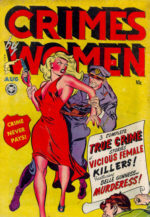 The method we have used is to read, over the years, very many comic books and analyze and classify them from as many points of view as possible. Many different patterns can be discerned in them, according to publisher, writer, draftsmen, the prevailing trend and the special genre. A lot of comic books have come to us from children themselves. And if it was feasible, whenever children referred to something they had seen in a comic book we asked them to bring us that particular comic book. When they no longer had it, we added its name to a list of "wanted" and tried to get it later on.
The method we have used is to read, over the years, very many comic books and analyze and classify them from as many points of view as possible. Many different patterns can be discerned in them, according to publisher, writer, draftsmen, the prevailing trend and the special genre. A lot of comic books have come to us from children themselves. And if it was feasible, whenever children referred to something they had seen in a comic book we asked them to bring us that particular comic book. When they no longer had it, we added its name to a list of "wanted" and tried to get it later on.
It is not scientifically sound to narrow down the problem to whether the influence of comic books is just "good" or "bad." That cannot be a sound starting-point. The question is, do they have a discernible influence, and if they have how does it work, how intense and lasting is it, and in what fields and regions of the child's mind does it manifest itself. This is exactly how I started.
When TIME magazine, at one stage of my investigations, reported my statement that the violence of crime comic books is a contributing factor to the increasing violence in juvenile delinquency, the father of a boy of four wrote a critical letter to the magazine in which he said, "It occurs to me that Dr. Wertham takes a child's mind too seriously." Is it possible to take a child's mind "too seriously"? Is anything to be gained by the current cheap generalization that healthy normal children are not affected by bad things and that for unhealthy abnormal children bad things do not make much difference either, because the children are bad anyhow? It is my growing conviction that this view is a wonderful excuse for adults to do whatever they choose. They can conceal their disregard for social responsibility behind a scientific-sounding abstraction which is not even true and can proceed either to exploit children's immaturity or permit it to be exploited by whole industries.
In the ordinary process of education children are told that they should listen and learn. In the psychiatric investigation of children's minds just the opposite is true: it is we who have to listen and learn. And this is what I and my associates have tried to do throughout our research.
Child psychologists often publish results of studies based on the questionnaire method. They take a group of children and ask them: "Do you do this (or that)? How often do you do it? Do you read this (or that)? What do you like better (this or that) ?" - and so on. This questionnaire method is inadequate. To ask children a series of simple questions and expect real enlightenment from their answers is even more misleading than to carry out the same procedure with adults. The younger the child, the more erroneous are the conclusions likely to be drawn. Children love to express themselves, but giving hard and fast answers to hard and fast questions is neither their favorite nor their natural method. Even if they do their best, the procedure is crude and leaves out all the finer shades of the dynamics of childhood thinking. On this premise we decided from the very beginning not to rely on any single method, but to use all the methods of modern child psychiatry which were suitable and possible in the individual case.
If one wants to go beyond narrow formal questions and intends to include the largest variety of different children, it would be a top-heavy procedure to start and execute a study devoted to one factor such as comic books alone. For this reason we have from the beginning integrated our studies of comic books with our general routine work in mental hygiene and child psychiatry. Good clinical work is good clinical research. In other words, in doing thorough clinical work the psychiatrist cannot help reaching into unexplored no-man's land. It will happen again and again that in cases that seem baffling in their symptomatology, refractory to treatment or show unusual manifestations, he will come up against new factors that are not in the books.
Starting on such a wide basis, the material available for this study covered the largest cross-section of children as they are seen in mental hygiene clinics: children who were referred by every variety of public and private child-care agency; who had come to the attention of the juvenile part of the Police Bureau or the Children's Courts: who were seen in the course of private practice or were confined for observation in psychiatric wards for adolescents, or were confined for physical diseases in pediatric wards, or seen in pediatric clinics. A large proportion of children were normal children who came to our attention for some social reason, including children of superior endowment, who were candidates for scholarships for special educational facilities. The upper age limit of children in whom we were most interested (although we did not adhere to it rigidly) was sixteen. Data were obtained also from older teen-agers and adults referring to their earlier comic-book-reading stage.
The reasons given why contact was sought for these children with physicians or psychiatrists or psychologists or social workers usually did not include any reference to comic books. But from the very beginning there were cases where the reading of comic books was part of the complaint. In these cases the main complaint was what the Reverend Shelton Hale Bishop, an authority on juvenile gangs, called the "extreme avidity" of their comic-book reading. "These comics may be a counterpart of what youngsters see in the movies," he said, "but at least they cannot live with the movies day in and day out as they do with their comics. They take them to bed with them. They walk along the street on their way to school reading them. When they go on an outing for sheer fun, for vacation, along goes an average of five or six magazines per child, and an abnormal amount of attention is given them. They read them going; they read them there; they read them coming home; they swap them; so that the whole thing borders on extreme and abnormal avidity."
If all the children who pass through a period of this "extreme and abnormal avidity" were really sick children in the first place, as experts of the comic-book industry would have us believe, this would be a sick generation. But such arguments are so superficial, and so evidently special pleading, that the only thing worth noting about them is that so many adults are naive enough to give them credence. It is necessary to analyze the comic books themselves, the children in relation to them and the social conditions under which these children live.
The cases in which comic books figured in the original complaint can be illustrated by a typical statement that we have heard many times. A social acquaintance asked me about his nephew: "My sister has a little boy. He reads comic books all the time. And I've seen him - it is all the time! He lives in one of those dream worlds. He's always interested in these books. All his concentration goes to that. All his excitement comes from these comic books. He doesn't even go out to play ball." I have never heard such a complaint about harmless animal comics. The very fact that in the beginning we did not know the best advice to give in such cases was an added incentive to keep up our studies. The common assumption that the child must be "unhealthy in the first place" proved in most instances to have no relation at all to the facts. What was unhealthy in most instances were the comic books when we inspected them. Children, like adults, without necessarily being sick or neurotic, are different in their powers of resistance to such stimulations.
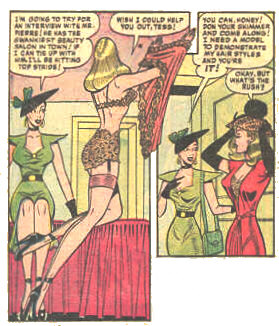 Another typical case where comic books figured in the reasons for referral was an eight-year-old boy who had suddenly begun to take money in his home. This boy was brought up in a cultured and secure home. He had been reading comic books, some of which he bought in a near-by candy store where large quantities of them were alluringly displayed. His father, a physician, told me, "He says he knows he's doing wrong, but he wants the money for comic books. He hasn't spent it on anything else. He has comic books all over the house. He reads them at the table and doesn't eat properly. Last summer when he went to camp every child had comic books and he brought a big bundle home with him. These books distract him from doing his lessons. Why, he's even gotten a sex angle from them. He told his mother that if she'd take off her blouse she'd be as pretty as a comic-book girl! What shall we do about him?"
Another typical case where comic books figured in the reasons for referral was an eight-year-old boy who had suddenly begun to take money in his home. This boy was brought up in a cultured and secure home. He had been reading comic books, some of which he bought in a near-by candy store where large quantities of them were alluringly displayed. His father, a physician, told me, "He says he knows he's doing wrong, but he wants the money for comic books. He hasn't spent it on anything else. He has comic books all over the house. He reads them at the table and doesn't eat properly. Last summer when he went to camp every child had comic books and he brought a big bundle home with him. These books distract him from doing his lessons. Why, he's even gotten a sex angle from them. He told his mother that if she'd take off her blouse she'd be as pretty as a comic-book girl! What shall we do about him?"
The father himself, a gentle person, had taken the drastic step of burning up all the comic books he found in his house.
Over the last few years cases of this type have greatly increased: the young child in the grip of the lure of comic books, the frustrated parent who is baffled by this invasion of his home by a powerful industry. But even so, cases that came to our attention just on account of comic- book reading form only a small proportion.
The psychiatric study of children is in general not nearly so standardized as that of adults. The so-called mental status, that is to say the formal examination for the more gross symptoms, such as disorientation or defects of judgment, or mood disorders, is not very productive. In adults we can take the life history of a patient and learn a great deal about him from his reactions to typical outer events. And we can proceed to study his inner life history as a sequence unfolding according to a certain pattern. The life history of children is not only briefer, but presents the paradox that while one can understand it only if one has a good picture of the child's environment, the story itself is an inner life history.
I have gone over many psychiatric charts of children taken in hospitals, in clinics and by consultants of private agencies. And I have often been astonished how few quotes, if any, they contain, of what the children themselves actually say.
We have given routine psychiatric examinations to children where they are interviewed by a psychiatrist. We have taken the history of the child's development from his parents, or from those with whom he has lived and who brought him up. Whenever possible, social workers have studied the child's social environment, obtained school reports, interviewed teachers, and relayed information from other agencies who had contact with the child or his family. In the same way, pertinent information was obtained from hospitals, private doctors and clergymen. In cases where courts were involved, probation reports were added to the record or probation officers interviewed.
In cases where children confided to us that they belonged to gangs and gave us permission to speak to other gang members, we made an attempt to hear their story. As much as possible we tried to ascertain the recreational influences to which children are exposed: games, community centers, radio, television, books. It is in that setting and with that perspective that we began to realize and ascertain the influence of comic books.
To establish proper circumstances which give a child the chance to express himself is difficult. Children do not like doctors' offices any more than adults do. Nor do they like being asked embarrassing questions in front of their parents. The way to gain their confidence is to treat them as persons in their own right. The paradox that this goes beyond examination and in itself is a step in therapy should not deter one. All child psychology worthy of the name is very close to educational and reeducational methods. It is in the very process of education that the child is best understood.
If one wishes to obtain the spontaneous expressions of children, it is only the amateur who attempts to exclude himself and then observe some pseudospontaneous reaction of the child. Children do not dislike authority. On the contrary, they have a strong inner urge to find and follow authorities whom they can trust. They may not always understand what is best for them, but they learn that, and a large part of a child's inner life consists in this search, disappointment, finding and retrospective correction. If the examining psychiatrist tries to eliminate himself as a personality and as an adult whom the child knows to be older and therefore more experienced, he will get only artificial results.
In children's lives other persons, parents especially, of course, but also older and younger siblings, play an important role. So it is necessary to obtain a picture of these other dramatis personae, not only as they are reflected in the child's mind, but as they really are. Interviewing younger children to hear what they have to say of a child is often very enlightening, sometimes more so than what parents say. Yet I have rarely seen in charts a quotation of what brothers or sisters have to say about a young patient. In our study of crime comic books it was interesting to see siblings because comic books are often a family affair. Younger children clandestinely or openly read the comics of their older brothers and sisters.
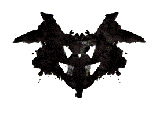 The application of psychological tests is apt to be overdone in a mechanical way. Yet they are indispensable to child psychiatry. The Rorschach (ink blot) Test, if expertly and judiciously interpreted, was an important tool in our study. This test consists of a series of ten ink-blot pictures. The subject is asked what he sees in them. It should not be given by itself, but should always be correlated with clinical findings and other tests. We have noticed that in Rorschach tests children may see forms that adults usually do not see. Investigated, they often turn out to be forms related to what they have seen in comic books, especially weird and horror comics, e.g. ghost forms, fantastic hands, etc. These are apt to be misinterpreted by psychologists as meaning complex-determined anxieties and phobias, whereas actually they are just reminiscences from comic-book illustrations. Here according to our findings an important inroad has been made into children's imagination and imagery, and of course also into their actions.
The application of psychological tests is apt to be overdone in a mechanical way. Yet they are indispensable to child psychiatry. The Rorschach (ink blot) Test, if expertly and judiciously interpreted, was an important tool in our study. This test consists of a series of ten ink-blot pictures. The subject is asked what he sees in them. It should not be given by itself, but should always be correlated with clinical findings and other tests. We have noticed that in Rorschach tests children may see forms that adults usually do not see. Investigated, they often turn out to be forms related to what they have seen in comic books, especially weird and horror comics, e.g. ghost forms, fantastic hands, etc. These are apt to be misinterpreted by psychologists as meaning complex-determined anxieties and phobias, whereas actually they are just reminiscences from comic-book illustrations. Here according to our findings an important inroad has been made into children's imagination and imagery, and of course also into their actions.
A boy of ten came to the [Lafargue] Clinic with the main complaint that he won't concentrate on his schoolwork. He had previously had a psychiatric examination through a public social agency where he received the customary cliche diagnosis of deep emotional disorder and where it was noted that his mother is seductive and stimulating to him. A Rorschach report stressed his underlying feelings of hostility and destructiveness and stated that the boy is attempting to repress his hostile and destructive tendencies at the expense of spontaneity.
When we studied this boy carefully, we found that he had a difficult father, but the imagery of his destructiveness came mainly from the fact that he was an inveterate reader of "murder comics." His real life difficulty was that he could not read. ("I don't read comic books. I only look at pictures.") Thus the correct interpretation of the Rorschach Test responses needs a knowledge of the whole picture and of the period in which the child lives. Circumstances in the United States today are different from those in the Switzerland of decades ago when Dr. Rorschach devised and worked out his test.
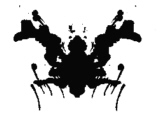 When pronounced hostile and threatening images are found in the Rorschach Test, they usually come from one of three causes. First, a special atmosphere of hostility in the early environment, parents' fights and family discords, or gang- dominated schools or neighborhoods. Secondly, such images occur in a relatively very small number of really psychotic and psychopathic children. Thirdly, they are derived from outside influences such as comic books.
When pronounced hostile and threatening images are found in the Rorschach Test, they usually come from one of three causes. First, a special atmosphere of hostility in the early environment, parents' fights and family discords, or gang- dominated schools or neighborhoods. Secondly, such images occur in a relatively very small number of really psychotic and psychopathic children. Thirdly, they are derived from outside influences such as comic books.
In the frequently hackneyed routine of the examination of children, ingrained tendencies or the narrower family situation are usually held responsible. But careful examination of factors shows usually a combination of the first and third groups. An eleven- year- old boy of superior intelligence showed in the Rorschach Test (and in his drawings) strife, hostility and threatening images. He lived with parents who for years had gone from battle to battle, and from court to court. In addition, he was steeped in crime-comics lore:
"My mother doesn't like me to read crime comic books, but I see them anyhow. I like Superman, Penalty. I like the Jumbo books. They have a lot of girls in them. There is a lot of fighting in them. There are men and women fighting. Sometimes they kill the girls, they strangle them, shoot them. Sometimes they poison them. In that magazine Jumbo they often stab them. The girl doesn't do the stabbing very often, she gets stabbed more often. Sometimes the girls stab the men, sometimes shoot them. I read one comic book where they tie people to the trees, tie them in front of stampeding herds. They tie them to the trees, then cut the trees and the sap runs over that person and the bugs are drawn to that sap, then they eat the people. Sometimes they torture girls the same way, by stabbing and beating them. They throw them in rivers and make them swim where alligators come. Sometimes they hit them with weapons on the back. They don't have much on when they hit them with weapons. It excites me a little bit."
Is it not natural that the Rorschach of the boy shows hostility and aggression?
The Rorschach Test is a valid scientific method. I was one of the first psychiatrists to use it in this country and published research on it over twenty years ago. In my experience with children and adults I have found it a revealing auxiliary method. But in recent years it has been too often used uncritically, interpreted with the bias of a purely biological determinism, leaving out all social influence, and given by psychologists with either faulty clinical orientation, or with no clinical orientation at all. Under these circumstances, the Rorschach Test like any other wrongly applied scientific method has given wrong results. It has been used, for example, to bolster the conception of more or less fixed psychological-biological phases of childhood development. And this is a conception which has caused parents whose children do not conform to textbooks a great deal of anxiety. It has led psychologists to socially unrealistic generalizations. A recent text on children's Rorschach responses describes as the "essence" of the average normal seven-year-old child a most abnormal preoccupation with morbidity, mutilation, pain, decay, blood and violence. But that is not the normal essence of the average American child, nor of any other child! You cannot draw true conclusions from any test if you ignore the broad educational, social and cultural influences on the child, his family and his street. These influences, of which comic books are just one (although a very potent one), favor, condone, purvey and glorify violence. The violent meaning of the Rorschach responses is not the norm for the age of seven; unfortunately it seems to be becoming the norm for a civilization of adults.
A popular syndicated column for parents on child behavior (emanating from the Gesell Institute) processes these findings for the popular consumption of parents. It concludes that "the environment - the radio, movies and funny books" have nothing to do with the child's lust for gore, his love of the horrible. "We believe these preferences to be the normal expressions of the child's likes at his age." Parents who read such a misleading column are of course disarmed by the supposed evidence of such a scientific method as the Rorschach Test. They tend to blame their child or themselves and in so doing they give the industries that peddle stories and programs of violence for children a free hand.
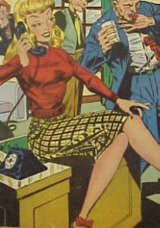 In the Thematic Apperception Test the child is shown a series of pictures depicting various scenes and is asked to tell stories about them. We found in some children preoccupation with stories of murder, blood-letting and violence in one form or another. But if one does not appreciate that this kind of production occurs much more in avid crime-comics readers than in other children, one is apt completely to misinterpret the test. This test also showed us that comic-book reading leaves definite traces in the child's mind which crop up as spontaneous manifestations in a projective test.
In the Thematic Apperception Test the child is shown a series of pictures depicting various scenes and is asked to tell stories about them. We found in some children preoccupation with stories of murder, blood-letting and violence in one form or another. But if one does not appreciate that this kind of production occurs much more in avid crime-comics readers than in other children, one is apt completely to misinterpret the test. This test also showed us that comic-book reading leaves definite traces in the child's mind which crop up as spontaneous manifestations in a projective test.
The Mosaic Test we give routinely to the children. The child has a choice of a large number of mosaic pieces of different colors and shapes. He is asked to put them on a tray and make any design he pleases. The test is very useful in a diagnosis or for ruling out of psychotic conditions, even inconspicuous and incipient ones. These tests revealed in a large series of cases that there is nothing intrinsically abnormal about those children who either became very addicted to reading crime comics or are influenced by such reading to delinquent acts. As a matter of fact, the Mosaic Test - in conjunction, of course, with clinical findings - indicated or confirmed our finding that those children who suffer from any really serious intrinsic psycho-pathological condition, including those with psychoses, are influenced by comic-book reading.
Intelligence tests and aptitude tests were of course given routinely in all cases where there was any question of the adequacy of intellectual endowment and resources. For the study of the effects of comic books, complete tests for reading ability were found to be of crucial importance. Many statements about children's reading have been made off and on which are not based on a really full and specific study of reading by the various tests devised for this purpose. The harmful effect of comic-book reading on children's ability to read is a special chapter and a sorry one.
A test which is no longer used as much as it should be, the Association Test, we found particularly useful. The associations to words which are complex indicators may reveal preoccupations and fantasies which cannot be obtained on a conscious level, certainly not by questioning. In cases where children are accused of serious delinquencies, the Association Test functions like a "lie detector" test and has helped us to reconstruct what really happened.
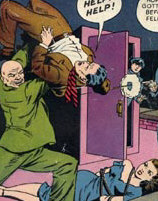 A boy of ten was referred to the [Lafargue] Clinic after he had been accused of pushing a younger boy into the water so that the small boy drowned. Another boy had seen him do it, but since he himself denied it the authorities felt it was one boy's word against another and the case was dismissed as "accidental death." The Clinic was asked to give the suspected boy emotional guidance. He had previously thrown stones at windows and on one occasion had hit and almost injured a woman in this way.
A boy of ten was referred to the [Lafargue] Clinic after he had been accused of pushing a younger boy into the water so that the small boy drowned. Another boy had seen him do it, but since he himself denied it the authorities felt it was one boy's word against another and the case was dismissed as "accidental death." The Clinic was asked to give the suspected boy emotional guidance. He had previously thrown stones at windows and on one occasion had hit and almost injured a woman in this way.
He was a voracious comic-book reader. His mother stated that he read whatever comic books he could get hold of. He said, "I like all the crime comic books. I like all kinds, science, everything that is ever in the house. I buy quite a few. I get them from my friends. Some of them give them to me and some of them loan them to me. I like crime comics such as Clue. It is all about when this man, he and three other men, they robbed jewelry and broke windows and they took the rings and ran away and a cop's car comes and shoots them. Sometimes they get killed, the gangsters, the cops kill them. Sometimes they hit each other when one of them does something wrong. Sometimes they use knives."
He was known to be a bully. He had bullied the boy who was drowned to such an extent that the boy's mother had gone to the authorities to ask for protection for her boy. Steeped in crime- comics lore, his attitude was a mixture of bravado and evasiveness. Nothing indicated that he had any feelings of guilt. The Association Test showed a definite blocking to key words such as drowning, water, little boy and pushing. After careful study of the whole case we came to the conclusion that the little boy would not have drowned if our boy had not pushed him in, and that our patient would not have been pushed to the murder if his mind had not been imbued with readiness for violence and murder by his continuous comic-book reading.
Another useful method for closer examination of young children is the Duess Test, which has been worked out in Switzerland and used in France. It is indispensable for the correct understanding of some children. With its help one can some times unearth subtle psychological factors not brought out by other methods.
The test consists in ten very brief fablelike stories. They are incomplete and after they are told to the child he is asked what the end of the story would be. In this way the child can complete the story in any way he likes. This test should be used in an elastic way. It should not be applied rigidly and should not be scored like a test. One can modify the original stories and can even add new ones to adapt them to the original case. I give the test in a way that is a mixture between telling a story, playing a game and asking a question. The Duess Test is often an interesting starting- point for further talks with a child.
The Duess Test can be given only to young children, the upper age limit being, in my experience, about eleven. In suitable cases the child projects himself into the story and identifies his own situation with that in the fable. In this way typical emotional complexes may be elicited, but, as in other tests, one should be careful not to view the child as if he were an adult neurotic or read too much abnormality into him.
Two contrasting examples will illustrate the method.
A boy of ten was treated at the Clinic for a behavior disorder. He gave inconspicuous answers to the first nine fables. The tenth fable goes like this:
A child wakes up tired in the morning, and says:
"Oh, what a bad dream I had!" What did he dream?
This boy replied, He dreamed about something he didn't like. It might have been something like a murder. He's gonna get murdered and he woke up.
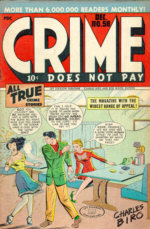 Study of this boy did not reveal any special hostilities or resentments. During one talk with him he told me that he liked Classics comics. "What are they?" I asked. "The Classics," he explained to me, "are the kind that tell a story, like under the water. -I can't remember them." When I told him I was very much interested in all kinds of comic books he confided in me that what he really liked and read a lot was crime comics. "I got a whole pile of Crime Does Not Pay!" Would it not be surprising if such a child did not have murder on his mind?
Study of this boy did not reveal any special hostilities or resentments. During one talk with him he told me that he liked Classics comics. "What are they?" I asked. "The Classics," he explained to me, "are the kind that tell a story, like under the water. -I can't remember them." When I told him I was very much interested in all kinds of comic books he confided in me that what he really liked and read a lot was crime comics. "I got a whole pile of Crime Does Not Pay!" Would it not be surprising if such a child did not have murder on his mind?
The other case is a girl of nine, referred to the [Lafargue] Clinic because she was a severe reading problem and was described as "very nervous." She also was a great comic-book reader. These are her responses to three fables:
FABLE 1 A father bird and a mother bird and their little baby bird are asleep in their nest on the branch of a tree. But there comes a big storm. It breaks the branch of the tree and the nest falls to the ground. The father bird flies quickly to one tree, the mother bird to another tree. What will the baby bird do? He knows how to fly a little. HER ANSWER: He will die because he can't fly so well. FABLE III FABLE IV |
The test results show indications of intrinsic psychological factors. The extrinsic situational influence of comic-book reading played only a minor role. Further analysis of this child showed that she had ticlike movements at times and suffered from compulsions. For example, she had to touch the ground with her hand. She had death wishes and profound feelings of hostility. Comic books did not intrude in her emotional life because she was too preoccupied with herself and had already built up such abnormal defenses as compulsions. All this started five years previously at the birth of her baby sister, of whom she was intensely jealous.
Children are apt to express themselves more easily and naturally when other children are around. Playroom observation is an indispensable adjunct of scientific psychiatric studies of children. It is almost the opposite of the questionnaire method. There are no questions, but only answers. There are no inquisitive adults, but only fellow children. One or two adults observe inconspicuously - but not pretending that they are not there. They participate only as catalysts. A group of children for the playroom does not have to be of the same age, and the sexes should be mixed. We have found that the most suitable age is from about five to ten, but children up to twelve can also be included.
Playroom techniques have been criticized because they are at once a diagnostic and a therapeutic tool. But in my experience this is actually a great advantage. Play technique is frequently successful in both areas. And it is theoretically a sound principle to do psychological exploring studies on a child in the process of treatment, education and re-education. Pedagogy, psychotherapy of children and child psychology should become recognized more and more as closely related and inseparable disciplines.
With a grant from the Child Neurology Research Foundation to work out methods for the observation and treatment of children, I organized a playroom in the middle thirties, while I was director of the Mental Hygiene Clinic at Bellevue Hospital. The case material and our methods in general were the same as those on which these studies are based. One of the main differences in the outer circumstances of the children is that until the end of the thirties there were no crime comic books to speak of, whereas in the forties they had, with respect to the time they take up, become one of the most important influences on children's lives.
In our play observations and therapy, children are engaged in spontaneous play activity of a type that permits them to express themselves as fully as possible. Any games with set rules or reading of books are considered an obstacle. The children construct buildings with mechanical building sets of wood and metal, draw, paint, make mosaics with colored stones, and work with clay.
Watching children in this setting, one learns how false is the idea that if left to themselves, with opportunity for constructive play, they will pay no attention to that and will instead seek outlets for "aggression."
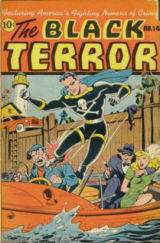 In the early forties one of the activities children sometimes wanted to keep up instead of engaging in spontaneous activity was reading comic books. Protocols of the play group would contain entries like this: "Entered playroom with his own comic book and kept looking at it," or "Greeted the others, friendly, then took a comic book and sat down to read it." This was in the early period of the rise of the crime comic book. In this atmosphere of the playroom it is easy to ask a child why and what he reads.
In the early forties one of the activities children sometimes wanted to keep up instead of engaging in spontaneous activity was reading comic books. Protocols of the play group would contain entries like this: "Entered playroom with his own comic book and kept looking at it," or "Greeted the others, friendly, then took a comic book and sat down to read it." This was in the early period of the rise of the crime comic book. In this atmosphere of the playroom it is easy to ask a child why and what he reads.
Comparison of our continuing observations led to definite conclusions. Of course young children are apt to be "wild," and I saw plenty of them in the thirties. But it was a natural wildness. Many children in the period some ten years later showed a kind of artificial wildness, with a dash of adult brutality and violence far from childlike. From comic books they derive ideas of activity and excitement not in the form of concentrated imaginative play, but in the form of crude and combative action. Of course this kind of thing is not found by those who work with questionnaire methods or with preconceived conclusions.
A boy of seven suffered from asthma and was "inattentive" in school. He improved with play therapy. It was noted that instead of playing he liked to pore over comic books a lot of the time. We weaned him away from them by giving him material to draw and paint with. But the comic-book spirit was very evident in his art productions. He drew Donald Duck with a gun and his drawings always showed "the robber shooting the cop." (That the opposite could also occur never seemed apparent from any of his numerous drawings.)
A number of children whom I had observed at an early age in the playroom I followed up later as adolescents. That provided a good background for evaluating the later impact of comic books and other factors. After I had convinced myself that comic books like this are a bad influence, I had to face the question, Why not advise parents to forbid children to read crime comics in the very beginning, to forestall adverse influences? But that is not so simple. Crime comic books are not an individual problem, they are a social problem. While it is not true that every child is a crime comics reader, crime comic books are available nearly everywhere children go. To forbid what is constantly and temptingly available is bad pedagogic practice. Moreover, children come constantly in contact with other children and get the effects from them, either with or without comic books. As far as abstaining from reading them is concerned, that is not easy for any child in this comic- book- selling and -promoting world. It is unfair to put that task on their shoulders. They need the help of adults, not only in one family at a time but on a much larger scale.
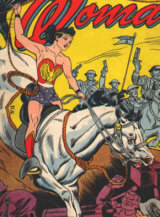 To advise a child not to read a comic book works only if you can explain to him your reasons. For example, a ten-year-old girl from a cultivated and literate home asked me why I thought it was harmful to read Wonder Woman (a crime comic which we have found to be one of the most harmful). She saw in her home many good books and I took that as a starting point, explaining to her what good stories and novels are. I told her:
To advise a child not to read a comic book works only if you can explain to him your reasons. For example, a ten-year-old girl from a cultivated and literate home asked me why I thought it was harmful to read Wonder Woman (a crime comic which we have found to be one of the most harmful). She saw in her home many good books and I took that as a starting point, explaining to her what good stories and novels are. I told her:
Supposing you get used to eating sandwiches made with very strong seasonings, with onions and peppers and highly spiced mustard. You will lose your taste for simple bread and butter and for finer food. The same is true of reading strong comic books. If later on you want to read a good novel it may describe how a young boy and girl sit together and watch the rain falling. They talk about themselves and the pages of the book describe what their innermost little thoughts are. This is what is called literature. But you will never be able to appreciate that if in comic-book fashion you expect that at any minute someone will appear and pitch both of them out of the window.
In this case the girl understood, and the advice worked.
Play observation and therapy are sometimes misunderstood by those inexperienced in the method and by the public. Violently destructive play is interpreted as a natural phase of child development and the erroneous idea is propagated that it will be advantageous to the child to let him indulge in violence as much as he likes. For example, a recent popularized medical column is headed "Play Therapy Lets Child Vent His Anger On Toys." And then it goes on to describe, as if it were a common occurrence, how a little boy who hated his mother and sister strangled two dolls and tried to dismember them. The same boy stuck pins into another doll supposed to represent the doctor. The physician who writes the column takes for granted that the emotion which children express in the playroom should be hostility.
He says, "The therapist accepts fighting and interrupts only when it is obvious that someone is going to be hurt." He takes it for granted that chairs will be broken! But this is all wrong. Most children do not engage in such violence, and certainly not from ingrained tendencies, and if they do, a good therapist would certainly analyze the causes for such violence early and help the child to understand and overcome it.
As another procedure of investigation, children were allowed to play with a marionette stage. They made up their own plays, usually with one child doing the outline and filling it in with suggestions from one or two other children. The plot outline was usually very simple, with the play consisting largely in improvisations. The marionettes represented such figures as permitted the child to symbolize a father- figure, a mother- figure, siblings and other dramatis personae in his life. Marionette shows sometimes reveal very well the psychological factors in the family constellation.
We used this method for children from five to twelve. Before joining this group children were not asked about comic books. It was interesting to see how the concrete inspiration for a plot, such as it was, came usually from a real event or from a movie, radio or comic book. Typical crime-comic-book methods appeared in the plays: knife-throwing, throwing somebody out of the window, stomping on people, etc. I later classified the productions (which were taken down by a stenographer) in two groups, constructive plays and destructive plays. The constructive plays were about parties, family reunions, lovers, dancing, painters in the house, etc. One production was entitled "A Day in Dr. Wertham's Office." Destructive plays were about crime, robbers, spies: "The Robbery in Your Neighborhood Store"; "A Night in Chinatown." Comic- book influences played a role only in the destructive plays. I have seen no constructive play inspired by a comic book. The language in the destructive plays sometimes came directly from comics. In the end the bad man went free or got killed. (He was never caught by the authorities and punished.)
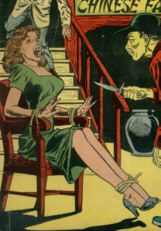 When the performance of the play was over, the child audience of about eight or ten was asked to discuss it and ask questions of the author. This audience reaction had a great deal of spontaneity and was often very revealing with respect to both the child who asked and the child who answered. For example, one child in the audience asked, "Why didn't you make the robber kick the cop?" Or a child author answered a question about where he got the idea for his play, "I got part of it out of a comic book - the part where they throw the Chinaman into the river. The rest I made up for myself." The children drew their own sets. These sketches were a supplementary source for psychological interpretations. For instance, in a constructive play an eight-year-old boy drew a "playground," a "house" and "on the street." Children who produced destructive plays often made correspondingly aggressive sketches.
When the performance of the play was over, the child audience of about eight or ten was asked to discuss it and ask questions of the author. This audience reaction had a great deal of spontaneity and was often very revealing with respect to both the child who asked and the child who answered. For example, one child in the audience asked, "Why didn't you make the robber kick the cop?" Or a child author answered a question about where he got the idea for his play, "I got part of it out of a comic book - the part where they throw the Chinaman into the river. The rest I made up for myself." The children drew their own sets. These sketches were a supplementary source for psychological interpretations. For instance, in a constructive play an eight-year-old boy drew a "playground," a "house" and "on the street." Children who produced destructive plays often made correspondingly aggressive sketches.
I regard it as a major finding that no good marionette-show plots ever came from comic books, although the children read so many of them. The "inspiration" from comic books was never artistic, literary or even a good story. It was a precipitate of fragmentary scenes, violent, destructive and smart-alecky cynical. This was in marked contrast to the inspiration children derived from movies, of which they had seen a much smaller number. It might be objected that a young child is not capable of absorbing and retaining a really good and artistic story from a movie or a real book. Even very young children get something out of a good story and can make something of it. During one of the audience reaction periods after a marionette show, an eight- year-old boy gave his account of the movie The Grapes of Wrath:
I saw The Grapes of Wrath. It was very good. It was about a man who got out of prison. He was in Sing Sing, I think. He walked to a place where he heard music. A man came along in a car. He asked for a ride. The man said, 'Don't you see that sign?' Then he said, 'Hop on till we get around the bend.'
>"They were walking to the barnyard. A big storm was coming. All the people were gone from the house because the cats came - big tractors. The people had to go to Uncle George. They had to get off the land, and travel, and travel, and travel. The oldest man died. The woman died. They were riding and riding. You see them in the dark without lights, and then it shows the end.
"Only in the end they were happy. They weren't happy at first because they had to get off the land."
Like a good child's drawing, such an account gives essentials in very simplified form. It is children with beautiful minds like this, who can summarize The Grapes of Wrath by telling how the people in it "travel and travel and travel," whom we corrupt by throwing them to the 100-million-dollar enterprise of the comic-book industry.
With adolescents, group methods are also useful, as play therapy is for younger children. With the younger children in a group we give more attention to what they do; with older children we get more from what they say.
At the beginning of World War II, I started a special form of group therapy for delinquent and predelinquent children in the Mental Hygiene Clinic of the Queens General Hospital. This was intended primarily for treatment, but it turned out unexpectedly to be one of the most revealing channels of information about the influence of comic books. When this group started I had no intention of taking up that problem, but the subject turned up spontaneously again and again.
The usual age range of members of this group was from thirteen to sixteen. The majority were boys, but there were always some girls. As therapy, the club was more successful than any other method of child guidance, especially of delinquents. This was attested by probation officers and juvenile law enforcement authorities. Some 90 per cent of all those who attended the sessions for prolonged periods (that is, at least one year) are no longer problems to their families, the authorities or themselves. Only children who had got into some kind of trouble were eligible, and the minimum trouble was playing hookey. In many cases much more serious offenses were involved. Most of the children came from one-family-house, middle-class sections of the population.
The name Hookey Club started in this way. I was confronted with several children one day who were truants. While interviewing them as a group, they began questioning one another. This went so well that I asked them to return in a group. Little by little, whenever children with truancy problems came, my assistants would feed them into the group- therapy class. Once, before one of the weekly meetings, I said to a social worker, "I see the Hookey Club is coming in today." She laughed and repeated the remark, and the name stuck. The Hookey Club developed into a regular institution. The sessions were strictly secret, with only myself and usually a stenographer present. All details remained confidential. At each session the case of one boy or girl or some general topic on someone's mind was discussed. One child functioned as chairman to maintain order. Every boy or girl at the session could question the child whose case was taken up. And everyone could express his opinion about the case. Among the children were always some experts in various forms of delinquency who questioned the child who was up for discussion. Whatever a child might have learned from comic books for the commission of a delinquent act, the group never accepted that as an excuse. Nor did any child ever spontaneously bring it up as an excuse.
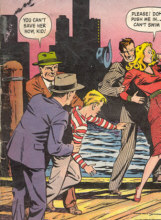 Children are more isolated than we think, and have few in whom they can confide without fear of misunderstanding or recrimination. Adults rarely realize how serious children are about their conflicts. They want to be straightened out. They shrink from a judge; but in the Hookey Club, where they were even more severely questioned by their peers, they could speak out fully and openly about anything whatsoever. When children question one another, one can readily see how the troubles of children reflect the troubles and conflicts of society. My experiences with the Hookey Club have confirmed me in my opinion that valuable personality assets slumber in delinquent children. By regarding these children as inferior or emotionally sick or psychopathic, we miss the constellation of social and individual forces that leads to delinquency and deprives these children of really scientific help. To characterize them merely by negative qualities is both unjust and scientifically inaccurate.
Children are more isolated than we think, and have few in whom they can confide without fear of misunderstanding or recrimination. Adults rarely realize how serious children are about their conflicts. They want to be straightened out. They shrink from a judge; but in the Hookey Club, where they were even more severely questioned by their peers, they could speak out fully and openly about anything whatsoever. When children question one another, one can readily see how the troubles of children reflect the troubles and conflicts of society. My experiences with the Hookey Club have confirmed me in my opinion that valuable personality assets slumber in delinquent children. By regarding these children as inferior or emotionally sick or psychopathic, we miss the constellation of social and individual forces that leads to delinquency and deprives these children of really scientific help. To characterize them merely by negative qualities is both unjust and scientifically inaccurate.
Forms of delinquency that adults know little about and children frequently encounter, like juvenile extortion rackets, were discussed. "Why did you steal the five dollars?" the thirteen- year-old chairman of one session asked. "I'll explain it to you, answered the fourteen-year-old whose case was being probed. "The older kids in school were getting up a mob and if I did not pay them some money they'd get after me and beat me up." To an adult this may sound like an untrue excuse, but there were always some juvenile experts in the Hookey Club who recognized a social reality when they saw it. Often boys who practiced the extortion racket themselves were questioned by the group:
Q: Where did it happen?
A: In the school yard.
Q: How did you know he had money?
A: I asked him how much money has he got, he said a dollar.
Q: How old was the boy?
A: About thirteen.
Q: How did you know he couldn't beat you?
A: I took money from him before, two weeks before that I got a wallet and fifteen cents before that.
Q: Did you do anything worse than the other things?
A: Yes. I stabbed a boy.
Q: When was that?
A: That was last year. The boy was about twelve years old. I stabbed him with a knife, a pocket knife. I stabbed him in the back. They put me in the shelter for two weeks.
In such cases I often found that the whole comic-book ideology and methodology were apparent in both those who answered and those who questioned. The boys evaluated this influence in a matter- of- fact way. A boy replied to questions about a burglary he committed:
"I read comic books where they broke into a place. I got the idea to break into the house. I wanted the money. I couldn't go through the front door because I didn't have the key. I didn't think of the comic book."
Questioner: "You don't have to think of it, it is in the back of your mind, in your subconscious mind."
A boy who had been arrested because he kicked another boy was questioned:
Q: What did you do?
A: We were pitching pennies in school. This kid was cheating. One guy grabbed me and pushed me against a water faucet He bent down to get the pennies. I took my foot and kicked him in the head. He had two or three stitches in the head.
Q: It wouldn't have been so bad if you had punched him in the head, but kicking is not right. When you see a comic book, the point is with most fellows, they see that a certain fellow in there does that, they want to be like him and think they are tough and can do the same. In the comic book they might get away with it, in this case you don't.
ANOTHER BOY: The guy who thinks he is a tough guy, he isn't really tough.
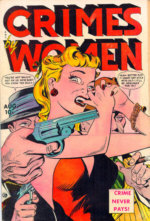 The effect of comic-book reading was scrutinized by the club members, because there were always some who had reading difficulties. The members were more critical than some of the pseudo-educators who proclaim that comic books are good for reading. At a session where classics comic books were mentioned, a fourteen-year-old boy said in reply to questions:
The effect of comic-book reading was scrutinized by the club members, because there were always some who had reading difficulties. The members were more critical than some of the pseudo-educators who proclaim that comic books are good for reading. At a session where classics comic books were mentioned, a fourteen-year-old boy said in reply to questions:
I don't read the comic books. I just look at the pictures. I can read, but I just don't take the time out. Sometimes, when it is a good story, I read it. You would be surprised how much you can learn just by looking at the pictures. If you have a good mind, you can figure things out for yourself. I like the horror science-fiction ones. I just look at the pictures.
In the Hookey Club the group was both judge and jury. I functioned merely as advisor. The children could recommend that a boy be allowed to leave school and be given his working papers, or that he should stay in school. They could suggest that a boy should not be taken off parole or that he should be. When I had to make a report about a child, the Hookey Club members discussed whether the child should be referred to the Children's Court or should receive supervision by the Juvenile Aid Bureau or should just be left under Hookey Club jurisdiction. Sometimes they suggested that no report be made until they had seen the child in question longer.
Going over the protocols of the Hookey Club it is hard to see how adults can be so naive about the role comic books play in the lives of children. The accounts of the sessions bristled with revealing bits about comic books, a topic that came up again and again in very different connections: a boy bought his switchblade knife through an advertisement from a comic book; a girl bought some phony medicine from a comic book to reduce her weight, which she was self-conscious about; different methods of stealing, burglarizing and hurting people were learned from comic books; comic books were cited to justify cunning, distrust and race ridicule; and so on. The excuses of the industry's experts that comic books show methods to hurt, wound and kill people in order to teach children self-defense did not go with the experts of the Hookey Club. They knew better. Nor did they believe that comic books taught not to commit delinquencies. They knew that what they demonstrate is that one should not make mistakes in committing them. A girl of fourteen who had been stealing had a comic book with her at one session:
THIRTEEN-YEAR-OLD CHAIRMAN: Which comic books do you read mostly?
A: Girls read mostly Crimes by Women
Q: Which crimes do women commit?
A: Murder. They marry a man for his life insurance and then kill him, then marry another man and then just go on like that until they finally get caught. Or they will be a dancer and meet the wrong kind of a guy and get involved in a bank robbery.
Q: What's the fun for you in reading that?
A: It shows you other people's stupid mistakes.
Here are some samples from Hookey Club proceedings:
A FIFTEEN-YEAR-OLD DELINQUENT GIRL: In some of the crime comic books kids pick up ideas. They give them ideas of robbery and sex...
Q: Sex?
A: Yes, plenty of sex. They show you unexposed [sic] women, men beating up girls and breaking their arms. The fellows see that and they want to try it. They try to wrestle with them and get ideas. I know of fellows who do imitate comic books. When I was young I used to read comic books and I watched the fellows and how they imitated what they did in the books. They tried it with the girls around my way. They tied them up. The boys were around ten or twelve, the girls were the same age. They used to always read the comic books. I asked them what made them do that. They said they saw it in the comic books. They read Crime, Murder Inc., Crime Does Not Pay, most of those crime books.
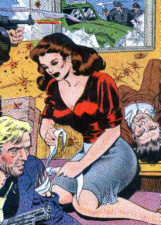 A boy who burglarized stores explained, I read the comic books to learn how you can get money. I read about thirty a week. I read Crime Does Not Pay, Crime and Punishment, Penalty, Wanted. That is all I can think of. There was this one case. It was in back of a factory with pretty rich receipts, money. It showed how you get in through the back door. I didn't copy that. I thought the side door was the best way. I just switched to the skylight. I carried it out practically the same way as the comic book did it, only I had to open two drawers to do it. I didn't do every crime book, some of them were difficult. Some of them I just imitated. I had to think the rest out myself. I know other boys who learned how to do such jobs from comic books.
A boy who burglarized stores explained, I read the comic books to learn how you can get money. I read about thirty a week. I read Crime Does Not Pay, Crime and Punishment, Penalty, Wanted. That is all I can think of. There was this one case. It was in back of a factory with pretty rich receipts, money. It showed how you get in through the back door. I didn't copy that. I thought the side door was the best way. I just switched to the skylight. I carried it out practically the same way as the comic book did it, only I had to open two drawers to do it. I didn't do every crime book, some of them were difficult. Some of them I just imitated. I had to think the rest out myself. I know other boys who learned how to do such jobs from comic books.
From the discussion of the case of a fourteen-year-old who had been caught shoplifting:
TWELVE-YEAR-OLD BOY: I saw a comic book where they do shoplifting. This girl was shoplifting and she was caught. They took her down to the Police Department. It was a love story. When she got married she still shop- lifted and she broke down and told her husband. I didn't like it. It was the only thing I had to read. It might give a girl ideas to shoplift.
FIFTEEN-YEAR-OLD BOY: They get the idea, if she gets away with it, why can't I get away with it. I saw a book where a man has a hanger in his coat with hooks on. He opens his coat and shoves things in and it disappears. It was a crime comic book.... The kids see that these men get away with it. They say, let's try it. They learn the method of putting it in a jacket. They teach you how to do it in the comic book. They didn't notice it until somebody jumped on this man and the things fell out. Otherwise they would not have caught him.
From a discussion on fighting in school:
THIRTEEN-YEAR-OLD BOY: I learned from crime comic books when you want to hit a man don't get face to face- hit him from the back.
FIFTEEN-YEAR-OLD (contradicting): In comic books they hit them in the eye!
From an all-round discussion on fairy tales:
"Superman is a fairy story."
"No, it is not a fairy story. It is a comic book. The comic books, they are mostly murder or something funny, but the fairy tales, they are just stories."
"The comics like Superman are not true, they don't happen, but they might happen or could happen. The fairy tales, they just can't happen."
"In the fairy tales they don't get killed."
At one Hookey Club session I had another psychiatrist present as a guest. The question of comic books and my criticism of them came up:
FOURTEEN-YEAR-OLD (addressing Wertham): I think it is stupid. You are the only psychiatrist who is really interested. Maybe there are five others... out of five thousand - how can you get any headway? You spend close to maybe a thousand dollars and it is stupid. You can't stand a chance against these comic-book publishers.
FIFTEEN-YEAR-OLD: That is right, because they got the police to put in a good word for the comic books. Like before, they used to have policemen and policewomen say it is a good influence for the children. They had a police lady and a police chief in every edition of Crime Does Not Pay. That is one of the reasons why you have no chance.
THE FOURTEEN-YEAR-OLD: I noticed in Crime Does Not Pay they give two dollars a letter for what's on your mind. People write beautiful letters saying this comic book is good for children - anything to earn two dollars.
ANOTHER FIFTEEN-YEAR-OLD: Gals don't approve of guys going to poolrooms in Brooklyn. They pay for protection. They take a switchblade and if a guy don't pay them a dollar, they will rip up the table.... I have been in with them.... You could learn that from a comic book, too. I read some of that in Crime Does Not Pay.
SIXTEEN-YEAR-OLD: The guys, the big racketeers and stuff, they pay the guys maybe to put something in crime comic books that is good. The other boys think it is a good idea. So they start doing it and get into the Youth House, and when they get back they work for the racketeers. They make a lot of money and everything and stuff. They want the young boys to read the crime comic books to get ideas. The boys are about seventeen when the racketeers use them for dope and stuff, to peddle it, and to run the numbers... I think crime comic books are there to make the kids into bad boys, so that they can make some money. I figure maybe these gangsters they say: a couple of years from now, when these guys grow up, I'll give them a number racket and I can be the big guy then. Sometimes they need gunmen to eliminate the other big guys. The comic books show about that, too, about racing and stuff.
GUEST PSYCHIATRIST: What was that you said about Youth House?
THE SIXTEEN-YEAR-OLD: The racketeers want to send you to Youth House, and Warwick, too, so that you get really bad.... They want you to go there so that people will be scared of you.... If you have a record, everybody will be scared of you. You know how people are in the neighborhood, people say so-and-so was in Youth House and in Warwick... If you walk in with a gun, they are scared of you.
THE FOURTEEN-YEAR-OLD (addressing the psychiatric guest):This is no insult to you. If you got a thousand dollar check for these funny books, would you talk against them? They give some people side money, so they write, "Approved by Dr. So-and-So: Good Reading Matter for Children."
My psychiatric guest felt that the Hookey Club was a little rough.
An indispensable method in psychological studies of children is to let them draw. There is an extraordinary discrepancy between all the details, especially sexual details, found by psychologists in children's drawings, and their having overlooked the much grosser, endlessly repeated sexual symbolizations in countless comic-book illustrations. Had they analyzed comic books as searchingly as they analyzed children's drawings, the results would have shown an utterly abnormal and unhealthy literature.
Sometimes I have asked children to copy anything they like out of their comic books. Then I have shown these productions to psychologists (without telling that they were copies from comic-book illustrations) and asked for interpretations - routine interpretations such as they make of other children's drawings. Here is a psychologist's interpretation of a drawing made by a boy of a typical comic-book illustration of a pirate:
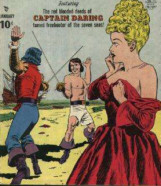 This drawing is bristling with phallic symbols - the sword, the outstretched arm, the big gun stuck under the belt, the conspicuous belt buckle and the shirt opened down to the belt; the way the legs are posed and the boots are drawn has some phallic quality, too. The actual genitals are extremely accentuated. The figure is that of a very glamorous man. He looks seductive. The whole body is emphasized more than the head, and there is very little attempt at control.
This drawing is bristling with phallic symbols - the sword, the outstretched arm, the big gun stuck under the belt, the conspicuous belt buckle and the shirt opened down to the belt; the way the legs are posed and the boots are drawn has some phallic quality, too. The actual genitals are extremely accentuated. The figure is that of a very glamorous man. He looks seductive. The whole body is emphasized more than the head, and there is very little attempt at control.
This child was preoccupied with sexual ideas. He is very aggressive sexually - not someone who would ask nicely, but who takes (rapes).
This drawing was a more-or-less exact copy of a comic-book illustration. All the features mentioned in the psychologist's report were present equally - if not more so - in the original comic-book picture (which, incidentally, had right next to it the picture of a sexy girl with half-nude and bulging breasts). This was just a run-of-the-mill comic-book illustration. If the psychologists find in the child who makes such a drawing an excessive and aggressive preoccupation with sex, why should the same description not apply to innumerable comic-book illustrations? And does one get rid of excessive preoccupation with sexual aggression by just looking at a lot of pictures like this?
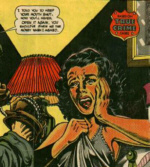 Spontaneous children's drawings which are not copies are often influenced by the pictures in comics. As a matter of fact, the child psychologist who does not take into account these subconscious reminiscences of imagery is apt to fall into error. If he disregards the comic-book influence, he misinterprets the result. He will ascribe to early subconscious complexes of the child what really are late and extraneously produced impressions.
Spontaneous children's drawings which are not copies are often influenced by the pictures in comics. As a matter of fact, the child psychologist who does not take into account these subconscious reminiscences of imagery is apt to fall into error. If he disregards the comic-book influence, he misinterprets the result. He will ascribe to early subconscious complexes of the child what really are late and extraneously produced impressions.
Comic-book-inspired drawings show how imbued children have become with the special forms of sadism dwelt on in comics, pictures of horror with glorified gangsters, with super man types, with "mad scientists," with sexual confusion.
The finer analysis of children's drawings gives us important leads with respect to a child's development in two significant areas: his relation to authority, disturbance of which may lead to other disorders such as jealousy; and his capacity for male and female identification. It is in these two fundamental areas that comic books do a great deal of harm.
In addition to all the other methods, the most important one is to treat the child and observe what progress he makes. How can one understand a troubled child fully unless one has tried to help him? The establishment of a proper transfer relationship is essential. Pre-adolescents and adolescents, like other people, want to be appreciated. In the first place, one must take their side in their struggle for self-expression, for recognition, for emancipation. But at the same time one must give them guidance on the strength of one's authority of more experience and more knowledge. It is an error to do only the one without the other. By treating a child, or guiding him or educating him, one learns about him. And that alone clarifies the real diagnosis.
These are the main methods used in our investigation. One of our problems was to scrutinize how children read comic books. The purpose was to determine what goes on in the child when he reads them. The first question was, what is actually reflected in the child's mind, what picture of the world does he get from comic books? It is with comic books as with any life experience. Not the experience itself, as an observer records and evaluates it, but the way it is reflected and experienced by the person himself, is what counts and what explains the psychological results.
Just to learn what children retain from comic-book reading is enlightening for anybody who really wants to become acquainted with the question. A boy of seven and a half is studied at the Clinic because he was "bad in school" and daydreams a lot. Previously psychiatrists at a public agency had made the diagnosis of "schizophrenic tendencies." Getting on the subject of comics he says, Sometimes I read a comic book ten times a day. I look at the pictures a long time. I just imagine as if they are real. They go around stabbing people. They have eight knives, and they rob a liquor store. They stab a woman with a knife. They stab two women with a knife. One man started killing people: five cops, six women and eighteen others. If anybody ever crossed him, he didn't give them no chance. This famous artist painted this picture and it was smuggled. Then it said the picture was torn up but then I found out it wasn't. Everybody got swindled. I like adventure.
This boy was successfully treated and even steered to good literature. He has now been followed up by personal interview for six years. We could never discover any "schizophrenic tendencies," that convenient snap diagnosis for troubled children.
Such statements from children, which are or should be the raw material of any comic-book study, can be obtained only if you get the child's confidence and show him that you are interested in him. Often children talk at first about the policemen; but then when they warm up and get more confidence they talk about the ones they really admire and think about - the crooks. This preference does not come from any moral perversity, but results directly from the fact that the criminal is depicted as more glamorous and dominant.
 By and large much younger children read crime comics than is commonly and conveniently assumed. Even children under six look at the pictures. Younger children do not see so many new comic books because the child of six or seven does not have so much money at his disposal as the child of ten or eleven.
By and large much younger children read crime comics than is commonly and conveniently assumed. Even children under six look at the pictures. Younger children do not see so many new comic books because the child of six or seven does not have so much money at his disposal as the child of ten or eleven.
Crime comic books are available almost anywhere. Any child who meets other children has access to them. They are in kindergartens, pediatric clinics, pediatric wards in the hospitals. They are in playgrounds and schools, at church functions and, - of course, in the homes of the child or his friends. Again and again I have found quantities of comic books in my own clinics, although I certainly did not want them there. Many children, owing to their life circumstances, are less able to resist this ingeniously contrived seduction to read more and more crime comics than are others. The question should not be so much why children get the habit as how are so many of them able to protect their integrity against them. Often there is a typical vicious circle: the comic books lead the child into temptation to commit delinquencies and stimulate him sexually. Then this is followed by fears and worries - as a result of which he reads even more comics to forget them.
During the first few years of our investigation it was easy to obtain information from children about which crime comics they prefer and how many they read. But since criticism of comics has spread and parents have begun to make some protests against them, children are apt to be on the defensive when asked about them. It has often happened that when I ask a child in the presence of his mother he replies promptly that the comics he prefers are "Donald Duck, animal comics and jokey books." But if I see this child alone on a subsequent occasion he corrects his previous statement, What I really like are the murder ones! - and he will go on to enumerate the usual list. So it is no longer so easy to obtain quickly accurate results.
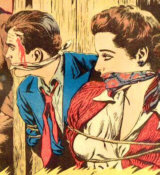 What children expect and find in comic books is well illustrated by the case of a nine-year-old boy. He was excellently brought up in a cultured and intelligent home. He got twenty-five cents weekly for spending money and he nursed it very carefully. One day he turned up after school and said, "I just spent three cents today." He displayed with satisfaction a tabloid newspaper he had bought. "They had some marvelous pictures of that gangster up in the Bronx that killed the police man. And they had a suicide!" His father asked, "Why did you buy that?" and was answered by the boy, proud of his discovery, "It's just as good as the comics - and costs much less!" Without realizing it, however, this small boy was a spendthrift; comic books have many more murders and acts of violence than two for three cents. He also forgot to take into account what more experienced crime-comics readers know, and what was pointed out by a boy on the New York Times Youth Forum:
What children expect and find in comic books is well illustrated by the case of a nine-year-old boy. He was excellently brought up in a cultured and intelligent home. He got twenty-five cents weekly for spending money and he nursed it very carefully. One day he turned up after school and said, "I just spent three cents today." He displayed with satisfaction a tabloid newspaper he had bought. "They had some marvelous pictures of that gangster up in the Bronx that killed the police man. And they had a suicide!" His father asked, "Why did you buy that?" and was answered by the boy, proud of his discovery, "It's just as good as the comics - and costs much less!" Without realizing it, however, this small boy was a spendthrift; comic books have many more murders and acts of violence than two for three cents. He also forgot to take into account what more experienced crime-comics readers know, and what was pointed out by a boy on the New York Times Youth Forum:
Comic books tell more than newspapers about the details, and show how the murders were committed.
How and why children stop reading comics, when they do, is as important a study as how they came to read them and how they keep it up. Any child psychiatrist will miss an avenue to the child's super-ego if he fails to let the child tell him why he gave it up. New influences come into his life, real reading may commence, sadistic fantasies may be outgrown. Many children give up crime-comics reading like a bad sexual habit.
I have frequently asked children who talked about the good and bad things in comic books to tell me what the worst is that they have seen. That is often very enlightening as to the child's psychology. Usually they have an ambivalent attitude about these "worst" things. They abhor them and yet have been fascinated by them. Usually they point out scenes of torture and/or murder. A thirteen-year-old boy told me once that he saw in a comic book a picture of gangsters tying two living men to their car and dragging them to death on their faces over a rough road. He could not remember which comic book it was in but said it was one of the most popular ones.
A thirteen-year-old boy told me once that he saw in a comic book a picture of gangsters tying two living men to their car and dragging them to death on their faces over a rough road. He could not remember which comic book it was in but said it was one of the most popular ones.
At first I did not believe him and thought that this must be his own spinning-out of a cruel fantasy, perhaps stimulated by something similar. What he had told me about was one of the cruel, primitive, bloody rites which did exist in prehistoric times, but disappeared at the dawn of history. In Homer's Iliad, Achilles, after slaying Hector, ties the dead body to his chariot and triumphantly races around the city of Troy. Homer described with repugnance and pity the bloody rite of dragging a dead body behind a war chariot - repressing the earlier, still bloodier one of dragging a living captive to his death.
Could a popular comic book for children, I asked myself, return to pre-Homeric savagery to stimulate children's fantasy to such barbaric cruelty?
Later the boy remembered that he had swapped this comic book along with other choice ones with another boy, and he brought it to me. Underneath the title a little enclosed inscription reads: "Every word is true!" Then comes the picture of a car that is speeding away. Two men are tied by their feet to the rear bumper and lie face down. One has his hands tied be hind his back and the lower part of his face is dragging in the road. The other man's hands are not tied and his arms are stretched out. The text in the balloons indicates that three men in the car are talking:
"A couple more miles oughta do th' trick!"
"It better! These #-"**!! GRAVEL ROADS are tough on tires!"
"But ya gotta admit, there's nothing like 'em for ERASING FACES!"
Next to these balloons is a huge leering face, eyes wide and gloating and mouth showing upper and lower teeth in a big grin:
"SUPERB! Even Big Phil will admire this job - if he lives long enough to identify the MEAT!"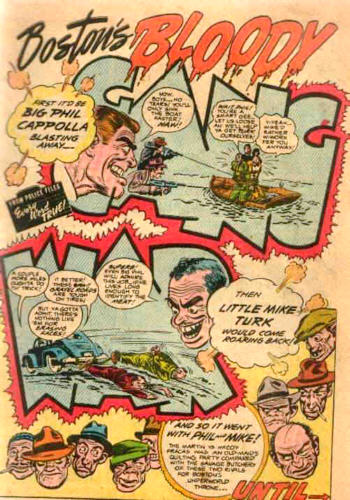
The boy who brought me the comic book explained to me that of course these men were still alive: "They may have been roughed up a little, but they are being killed by being dragged to death on their stomachs and faces." You can see that very plainly, he pointed out to me, from the carefully drawn fact that they both desperately try to hold up their heads - the one with outstretched hands still succeeding at it, the other still jerking his head up but now failing to do so enough to keep his face off the gravel road. "Corpses," my young expert explained, "couldn't do that."
Two years later this story was reprinted. This time the story was promoted from the middle of the book to first place, and the dragging-to-death illustration was the frontispiece.
An excerpt from Seduction of the Innocent by Fredric Wertham (Rinehart & Company, Inc. New York, Toronto 1953, 1954)